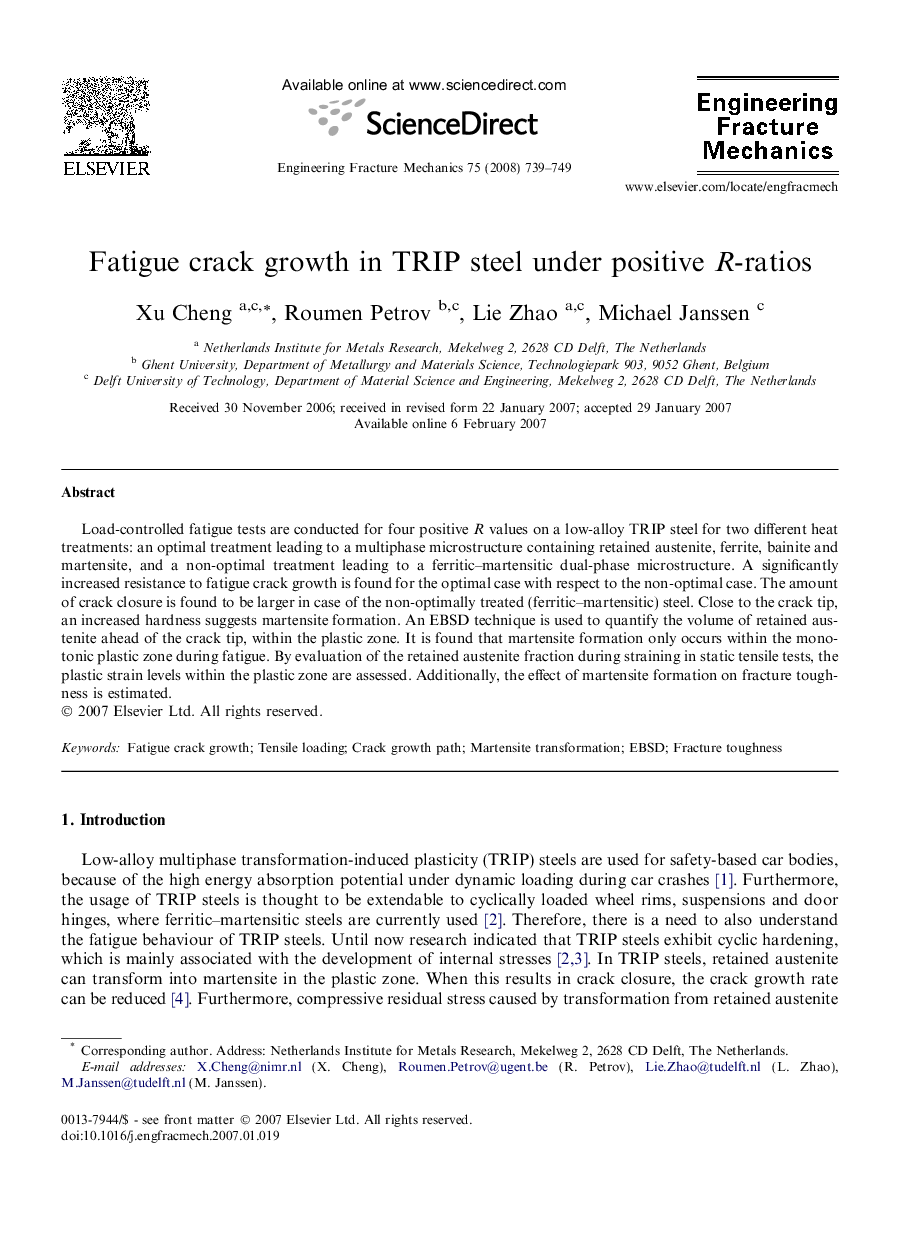| Article ID | Journal | Published Year | Pages | File Type |
|---|---|---|---|---|
| 772059 | Engineering Fracture Mechanics | 2008 | 11 Pages |
Load-controlled fatigue tests are conducted for four positive R values on a low-alloy TRIP steel for two different heat treatments: an optimal treatment leading to a multiphase microstructure containing retained austenite, ferrite, bainite and martensite, and a non-optimal treatment leading to a ferritic–martensitic dual-phase microstructure. A significantly increased resistance to fatigue crack growth is found for the optimal case with respect to the non-optimal case. The amount of crack closure is found to be larger in case of the non-optimally treated (ferritic–martensitic) steel. Close to the crack tip, an increased hardness suggests martensite formation. An EBSD technique is used to quantify the volume of retained austenite ahead of the crack tip, within the plastic zone. It is found that martensite formation only occurs within the monotonic plastic zone during fatigue. By evaluation of the retained austenite fraction during straining in static tensile tests, the plastic strain levels within the plastic zone are assessed. Additionally, the effect of martensite formation on fracture toughness is estimated.
